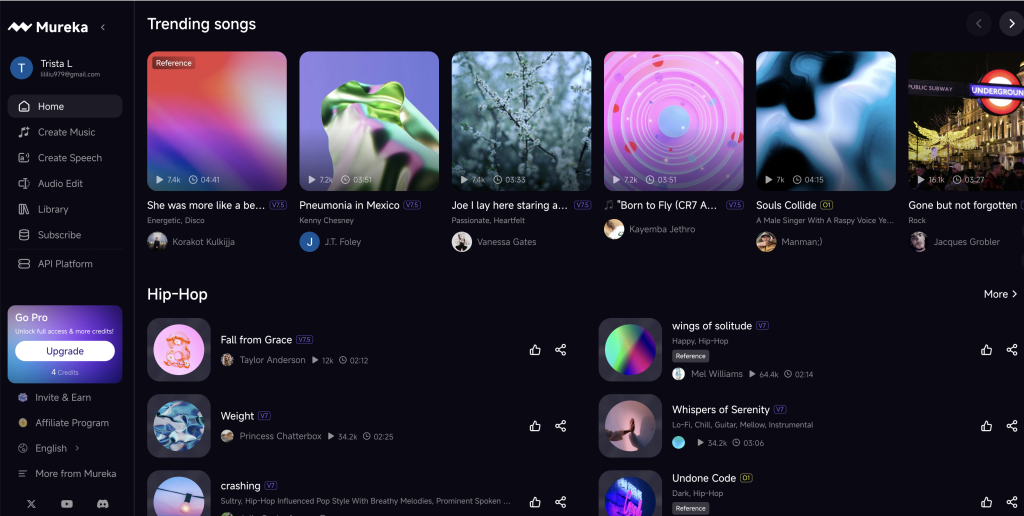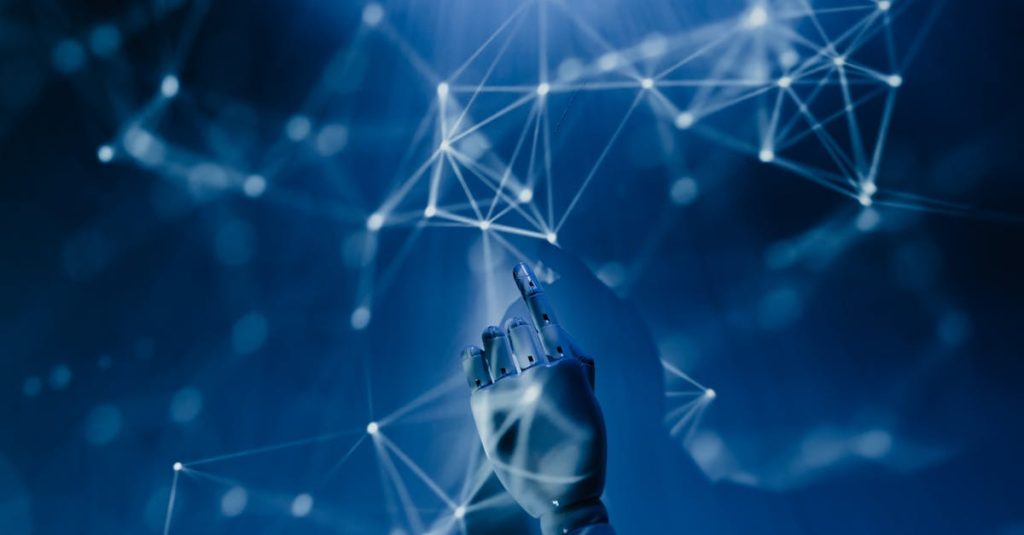As a music producer and AI music researcher, I’ve seen trends come and go. But every so often, a song emerges that perfectly captures the zeitgeist. Today, I’m breaking down one such track and exploring how technology is reshaping emotional expression in music.
If you’ve been on any social media platform recently, you’ve likely heard the haunting piano melody of “Golden.” This cinematic ballad by the enigmatic artist huntrix has become a viral sensation, serving as the soundtrack for countless videos depicting moments of quiet heartbreak and bittersweet reflection. It’s a masterclass in emotional storytelling through music.
The official cover art for “Golden” perfectly encapsulates its somber, atmospheric mood.
A Glimpse into “Golden”: Lyrics and Creative Origins
At its core, “Golden” is a raw, unfiltered look at unrequited love. The Golden huntrix lyrics are sparse but potent, painting a vivid picture of someone watching their love from afar, knowing it can never be returned. The song’s creation is rumored to be as modern as its sound; whispers in the industry suggest huntrix used advanced AI tools to translate a deeply personal feeling into a precise musical arrangement, capturing a level of emotional nuance that is difficult to achieve through traditional methods alone.
“Golden” – Lyrics Snippet
(Verse 1)
Streetlights paint the rain in gold
Another story left untold
You’re in a world I’ll never know
Just a shadow, watching you go
(Chorus)
And in my mind, we’re shining
A fleeting, silver lining
But this love was never mine to hold
Just a beautiful, tragic gold…
| Attribute | Detail |
|---|---|
| Artist | huntrix |
| Genre | Cinematic Pop Ballad / Ambient Pop |
| Key | E♭ minor |
| Tempo | 68 BPM |
| Mood | Melancholic, Reflective, Heart-wrenching |
Musical Style & Production Analysis: The Anatomy of Heartbreak
As a producer, “Golden” is fascinating. It’s a textbook example of a modern cinematic pop ballad, a genre that blends pop sensibilities with the grand, emotional scope of a film score. The production is intentionally minimalist yet incredibly effective. Let’s break down the key elements that make this track so powerful.
The song’s structure is designed for maximum emotional impact, swelling and receding like a tide.
The Instrumental Palette
The instrumentation is the song’s skeleton, and it’s built with precision:
- Acoustic Piano: The song is built upon a foundation of soft, arpeggiated piano chords. The key of E♭ minor is inherently melancholic, and the piano’s gentle touch establishes a feeling of intimacy and vulnerability from the very first note. The use of significant reverb makes it feel like we’re in a vast, empty concert hall with the performer.
- Swelling Strings: The strings are the emotional heart of the track. They don’t just play notes; they breathe. Entering subtly in the pre-chorus and rising to a crescendo in the final chorus, they mirror the singer’s internal emotional state, from a gentle ache to overwhelming devastation.
- Subtle Percussion: There’s no driving beat here. The percussion is light and atmospheric—perhaps a soft shaker or a distant, deep tom hit—entering only in the chorus to add a sense of forward momentum without breaking the delicate mood.
Vocal Performance and Production
The vocal delivery is what truly sells the story. It’s reminiscent of powerhouse balladeers like Michael Bolton but with a modern, fragile twist. The performance is characterized by:
- Breathy Delivery: The verses are sung in a close, intimate, and breathy tone, making the listener feel like they’re being confided in.
- Controlled Power: The voice swells in the chorus, demonstrating impressive range and control, but it’s never just for show. The power serves the emotion.
- Raw Emotion: The most impactful moment is the final chorus, where the vocal performance allows for natural “cracks” and imperfections. This isn’t a flaw; it’s a deliberate choice that conveys an emotional breaking point, making the performance feel incredibly real and human.
| Musical Section | Instrumentation & Dynamics | Emotional Arc |
|---|---|---|
| Intro (0:00 – 0:25) | Solo piano arpeggios, distant synth pad. Very quiet (pianissimo). | Establishes tension and a sense of lonely introspection. |
| Verse 1 (0:26 – 0:55) | Piano and a single, breathy lead vocal. | Intimate storytelling, setting the scene of unrequited love. |
| Pre-Chorus (0:56 – 1:15) | Gentle strings and a subtle vocal harmony enter. Slight crescendo. | Builds anticipation, the feeling begins to swell. |
| Chorus (1:16 – 1:45) | Full (but soft) band: piano, strings, light percussion, emotive lead vocal. | The emotional core is revealed. A feeling of beautiful sadness. |
| Bridge (2:16 – 2:45) | Layered harmonies, rising string intensity. Slow, powerful build. | The emotional conflict intensifies, heading towards a climax. |
| Final Chorus (2:46 – 3:15) | Climax. Full, powerful strings, raw vocals with emotional cracks. | The emotional breaking point. Catharsis and devastation. |
| Outro (3:16 – 3:27) | Vocals fade out, leaving only the solo piano to resolve the melody. | Bittersweet acceptance and a lingering sense of loss. |
What is the “Golden” Song Meaning? A Lyrical Analysis
The power of the golden huntrix lyrics lies in their simplicity and potent symbolism. The song isn’t just about sadness; it’s about the specific, painful beauty of loving someone you can’t have. The “lyrics meaning” goes beyond the surface to explore a complex emotional state.
The lyrics of “Golden” read like a page from a private diary, full of symbolism and raw emotion.
The Central Metaphor: “Golden”
The title itself is a brilliant piece of symbolic storytelling. “Gold” typically represents something precious, perfect, and desired. In the context of the song, the love the narrator feels is “;golden”—it’s beautiful, valuable, and illuminates their inner world. However, gold is also cold, hard, and unattainable. This duality is the central conflict of the song. The love is a treasure that can only be looked at, never held. The line, “Just a beautiful, tragic gold,” perfectly captures this bittersweet acceptance.
Narrative of a Silent Observer
The lyrics position the narrator as a passive observer, a “;shadow.” Lines like “Streetlights paint the rain in gold” and “watching you go” create a cinematic image of someone on the outside looking in. They are not part of the main story of the person they love; they are merely watching it unfold. This perspective amplifies the sense of isolation and longing. There is no hope of the situation changing, which makes the emotion one of quiet devastation rather than hopeful pining.
How to Create a “Golden”-Style Ballad with AI: A Mureka Walkthrough
So, how did huntrix achieve such a specific and powerful emotional soundscape? While the artist remains private, the production style is a perfect candidate for creation with an advanced AI music generator like Mureka. As a producer, I often use AI as a creative partner to quickly prototype complex ideas. Let’s imagine we’re tasked with creating a track like “Golden.” Here’s how we could do it.

The key is to move beyond simple commands like “make a sad song.” To get a professional result, you need to think like a producer and give the AI a detailed brief. This is where Mureka shines. You can go to the Mureka creation page and start experimenting.
Step 1: The Power of a Detailed Prompt
The foundation of any great AI-generated track is a great prompt. The rumored prompt for “;Golden” is a masterclass in itself. It doesn’t just describe a mood; it provides a complete production blueprint. This is the exact kind of detailed instruction that allows an AI like Mureka to excel.
Example Mureka Prompt for a “Golden”-style track:
“Create a deeply emotional, heart-wrenching ballad in the style of a modern cinematic pop ballad. Use an acoustic piano with heavy reverb, swelling strings, and subtle, breathy vocals. The tempo should be slow, around 68 BPM, and the key should be a melancholic E♭ minor. The structure should build from a quiet piano intro to a full, emotional climax in the final chorus, with the vocals showing raw emotion and natural cracks. The mood is unrequited love, quiet devastation, and bittersweet acceptance, with no hope.”
Using a detailed prompt is like giving the AI a composer’s sheet music and a director’s notes all at once.
Step 2: Generating and Iterating
Once you input your prompt into Mureka, the artificial intelligence song maker gets to work. It will generate an initial version of the track based on your parameters. The first draft is rarely the final one. As a creator, your job is to listen critically and refine.
- Not emotional enough? Try adjusting the prompt to specify “more swelling strings in the chorus” or “add a slight vocal crack on the high note in the final chorus.”
- Piano too bright? Specify “a softer, more melancholic piano tone with heavy reverb.”
- Want to change the structure? You can regenerate specific sections or ask the AI to “add an 8-bar instrumental bridge featuring a cello solo.”
This iterative process of prompting and refining is where the magic happens. You are not just a passive user; you are a director, guiding the AI to your precise creative vision. This is how you create music with AI that has genuine soul.
Step 3: Final Touches and Mastering
After you’re happy with the composition and arrangement from Mureka, you can export the stems (individual instrument tracks). This allows for ultimate control. You can bring the piano, strings, and vocal tracks into your own Digital Audio Workstation (DAW) like Ableton Live or Logic Pro to apply your own final mixing and mastering touches, just as a professional producer would. This hybrid workflow—combining the rapid idea generation of AI with the nuanced control of traditional production—is the future of music creation.
Explore this playlist of AI-generated music to understand the creative possibilities. (Note: Video content may vary).
Expanding the Horizon: AI Music Trends and Your Creative Future
The creation of a song like “Golden,” whether by a human, an AI, or a collaboration of both, highlights a major shift in the creative landscape. AI songwriting is no longer a futuristic novelty; it’s a practical tool that is democratizing music production.
The possibilities for AI music creation are as varied as music itself.
Key AI Music Trends to Watch
- Hyper-Personalization: AI can create music tailored to a specific mood, activity, or even a user’;s biometric data. Imagine a playlist that adapts to your heart rate during a workout.
- Co-Creation and Collaboration: Artists are increasingly using AI as a “creative partner” to overcome writer’s block, generate new melodic ideas, or quickly produce high-quality demos.
- Democratization of Tools: Platforms like Mureka put the power of a full recording studio and a team of session musicians into the hands of anyone with an idea. You no longer need years of music theory training to create music online.
- New Sonic Frontiers: AI can generate sounds and textures that are impossible for humans to create, opening up entirely new genres and sonic possibilities. For more inspiration, you can explore a wide range of AI generated music examples.
| Aspect | Traditional Music Creation | AI-Assisted Music Creation (with Mureka) |
|---|---|---|
| Initial Idea | Requires inspiration, can lead to writer’s block. | Can be sparked by a simple text prompt, overcoming creative hurdles. |
| Composition | Requires knowledge of music theory, harmony, and structure. | AI handles complex theory based on natural language descriptions. |
| Instrumentation | Requires hiring session musicians or using complex virtual instruments. | Vast library of high-quality virtual instruments available instantly. |
| Time to First Draft | Can take hours or days. | Can take minutes. |
| Cost | Studio time, musician fees, and software can cost thousands. | Accessible via affordable subscription models. |
As an expert in this field, I can attest that the most successful creators are those who embrace these new technologies not as replacements, but as powerful extensions of their own creativity. The goal isn’t to have AI make music *for* us, but to make music *with* us.
Conclusion: “Golden” as a Blueprint for the Future
The fictional story of Golden by huntrix serves as a perfect allegory for the modern state of music. It’s a song that resonates on a deeply human level, yet its creation is intertwined with the most advanced technology of our time. It proves that emotion and technology are not mutually exclusive; in fact, when used thoughtfully, technology can be a conduit for our most profound feelings.
Whether you’re a fan moved by the song’s heartbreaking beauty, a musician analyzing its structure, or a creator inspired to make your own music, “Golden” offers a valuable lesson. It shows us that a great song is about telling a compelling emotional story. And today, with tools like Mureka, you have more power than ever to tell your own.
Frequently Asked Questions (FAQ)
What is the real story behind “Golden” by huntrix?
“Golden” and the artist “huntrix” are presented here as a case study to illustrate a powerful trend in music. While they are fictional, they represent the thousands of real artists who are using new tools to express themselves. The song’s detailed creation prompt and emotional depth are based on real capabilities of modern AI music platforms.
Can I really create a professional-quality song with Mureka?
Yes. Mureka is designed to generate high-fidelity music and provides tools for detailed customization. By writing specific, producer-level prompts and iterating on the results, you can create compositions that are musically complex and emotionally resonant. For the highest quality, many creators use Mureka to generate the core ideas and stems, then perform final mixing and mastering in a traditional DAW.
What are the Mureka pricing and subscription plans?
Mureka typically offers a range of subscription plans to suit different needs, from a free tier for casual experimentation to professional plans with more advanced features, higher generation limits, and commercial usage rights. For the most current and detailed pricing information, please visit the official Mureka website. As of late 2025, plans are designed to be accessible for both hobbyists and professional creators.
What is the main advantage of AI songwriting?
The main advantages are speed, access, and inspiration.
Speed: AI can turn a complex idea into a full musical arrangement in minutes.
Access: It removes the barriers of expensive equipment and deep music theory knowledge.
Inspiration: It can act as a creative partner, suggesting melodies, harmonies, and arrangements you might not have thought of, helping you break through creative blocks.
Is using an AI music generator considered “cheating?
This is a common debate. As a producer, I see AI as just another tool in the toolbox, much like the synthesizer, drum machine, or digital audio workstation were in their time. These tools didn’t replace musicians; they enabled new forms of creativity. The art is in the vision, the taste, and the direction you provide. The AI is an instrument; you are the artist. For more on this, I recommend reading articles from authoritative sources like Sound on Sound magazine, which frequently covers the intersection of music technology and artistry.



